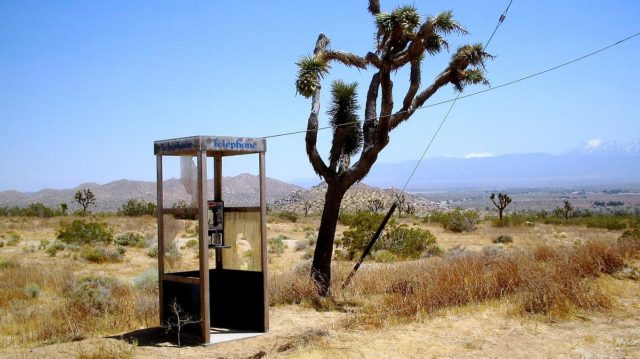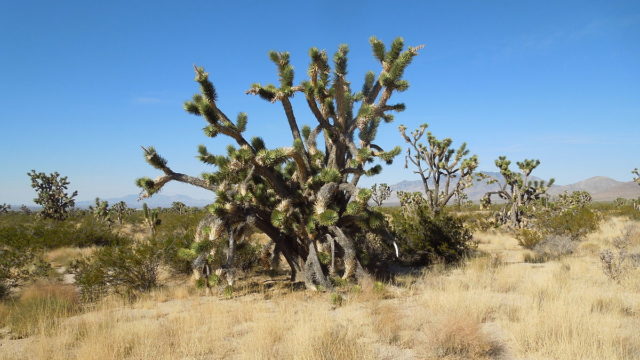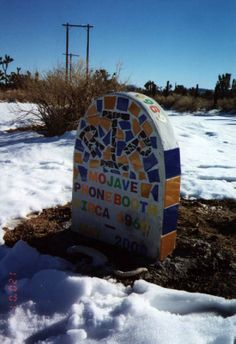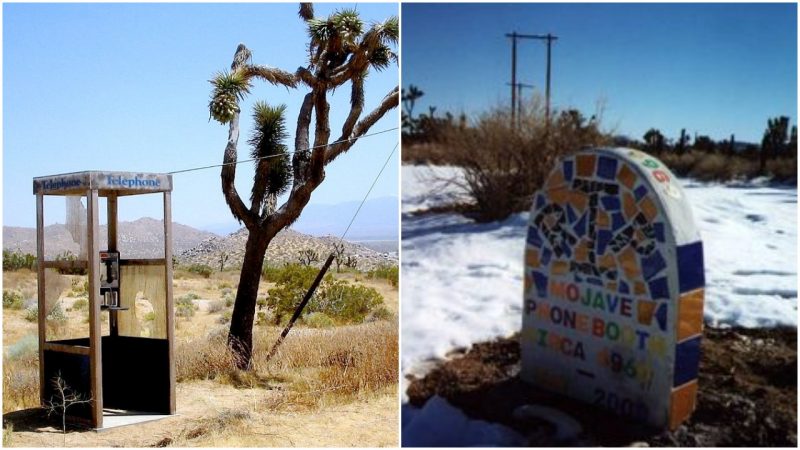There is a scene in Harry Potter in which Harry and Mr. Weasley use a red telephone booth to enter the Ministry of Magic in London.
In The Matrix, there is a scene where the character of Trinity is being chased by an agent driving a construction truck at full speed. Trinity, played by Carrie-Anne Moss calls “the real world” from a phone booth and it transports her there from “the Matrix”. The truck smashes the phone booth at almost the same instance as she escapes the scene.
A scene in Goodfellas shows Jimmy, played by Robert De Niro, being told the news of the murder of his partner in crime, Tommy (Joe Pesci). Once he hears the news over the pay phone, Jimmy gets angry for his friends and goes on to knock the phone booth over.
Many movies have helped us romanticize the image of the phone booth, either as a getaway to another place or another world or by fulfilling the function to communicate bad news, as in the examples above.

Outside the world of fiction, oftentimes, the phone booth less and less finds any useful purpose, falling into a state of decay. It was no different in the case of the Mojave phone booth, which has become the ultimate symbol of obsolescence while gaining an iconic status.
The Mojave phone booth was a lone telephone booth in what is now the Mojave National Preserve in California. In 1997, it attracted huge online attention because of its unusual location.
Installed at the junction of two remote dirt roads, the Mojave booth most likely replaced an earlier booth 30 miles to the south. It was requested by Emerson Ray, an owner of the Cima Cinder Mine nearby the booth point, and it was originally set up in 1948 to serve the miners and other people living in its proximity.
A payphone took the place of the original hand-cranked magneto phone somewhen in the 1960s. In the 1970s it was replaced once again with a touch-tone model. But the real days of glory and fame for the Mojave phone booth came in 1997, when it became a real sensation online, in the early days of the internet.
Its path to stardom started thanks to a man from Los Angeles who noticed a telephone icon on a map of the Mojave and paid a visit to it. He wrote a letter about his encounter to an underground magazine and also featured the telephone number of the booth there.
The telephone booth’s original number had been (714) 733-9969 until the area code changed to 619 and after that once again to 760.

A local computer entrepreneur, named Godfrey Daniels, had read the letter in the magazine and started what would be the first of a series of websites dedicated to the Mojave telephone booth. Soon enough, the booth got really famous and fans started calling the number. Some people even took trips to the booth. They would camp at the site and answer the telephone when it rang. Over time, graffiti decorated the telephone booth, adding to its monumental look in the vast remoteness of the area that overwhelmed it.
In 1999, Los Angeles Times writer John Glionna reported on meeting a man around the booth who had stated that it was the Holy Spirit who had him instructed to pick up the phone each time it rang. Weird enough, the man spent 32 days there, answering more than 500 calls, including a couple of calls from somebody who presented himself as “Sergeant Zeno from the Pentagon”.
On May 17, 2000, the famous phone booth was removed by Pacific bell, the company that provides the actual telephone services in California. The company was requested to do so by the National Park Service. The phone number was also retired at that point. The official statements of the booth removal said it was due to visitors who affected the area at the national reserve. Pressure from unhappy local people because of increased traffic might have been one more reason that added to the decision.
For a short while, a headstone-like plaque was installed at the site, but it was also removed by the National Park Service. Fans kept on grieving the loss of the booth. What happened next with the telephone number is also interesting.

In 2013, the number 760-733-9969 was acquired by Lucky 225, a.k.a. Jared Morgan, a Southern Californian phone phreak and white hat security expert. The phone number subsequently got revived and enabled strangers to enjoy conference calls, connecting them just like how the actual phone booth would have at the end of the 1990s.
Reportedly, at some point before May 2015, the number was reconfigured and it played an audio book entitled “Exploding the Phone” by Phil Lapsley, in case nobody joined the phone conference. Nowadays, if there are no people participating, the booth plays some music. An SMS is also sent to the callers after joining a call. In case the caller ID is blocked or for some reason unobtainable, the number does not accept the call.
Read another story from us: Inspired by Star Trek: Martin Cooper invented the mobile phone in 1973
The entire story of the Mojave phone booth has inspired several films: an independent short film entitled Dead Line, a short documentary Mojave Mirage, and even a full-length film called Mojave Phone Booth. Writer Glenn Beck also used it as an inspiration for the prolog of his novel The Overton Window.
Now, in case you get bored today, you know where to call.
